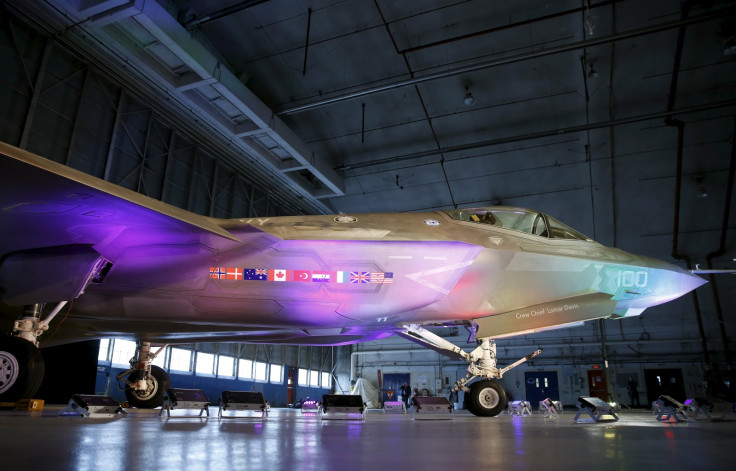F-35 project has made 'significant and solid progress' in terms of cost and production, US officials say
Lt Gen Christopher Bogdan said the price tag for an F-35A model has come down to about $94.5m.
The F-35 Lightning II joint strike fighter jet project has made "significant and solid progress" and is crucial to US Marine Corps, Air Force and the US Navy, officials reportedly told a House Armed Service Committee panel on Thursday (16 February).
US President Donald Trump had criticised the project for being too expensive and also threatened to stop production of the $100m (£80m) jets. However, he was repeatedly assured by Lockheed Martin — the manufacturers of the jets — that they will drive the cost down to affordable limits.
Addressing the panel on tactical air and land forces, Lt Gen Christopher Bogdan — a programme executive officer of F-35 joint programme office, said on Thursday that the F-35 stealth jet development programme "is nearing completion within the cost and schedule boundaries put in place in the 2011 rebase line".
He said that the price tag for an F-35A model has come down to about $94.5m today from $100m. The Air Force general also said that the reduction in the cost has enabled them to initiate "a block buy strategy for our foreign partners and an economic order quantity contracting strategy for the US services".
"We believe we are on track to continue reducing the price of the F-35 such that in [fiscal year 2019], with an engine including all fees, the F-35A model will cost between $80 million and $85 million," Bogdan added, according to a Pentagon press release.
The general also said that the F-35 fleet currently has more than 210 airplanes that have surpassed 73,000 flight hours. "The fleet is rapidly expanding and we're flying F-35s in the United States, Italy, Japan and Israel as we speak."

Meanwhile, Lt Gen Jon Davis, deputy commandant of Marine Corps aviation, said that the F-35B and the F-35C "remain a top acquisition priority for the Marine Corps" as they are becoming increasingly convinced that the F-35 is a "game changer and a war winner".
He added that the Corps "can't get those airplanes in the fleet fast enough to replace our F-18s and our Harriers," which on average are 22 years old. "We're achieving astounding results [with the F-35s] in the highest threat scenarios and that across the range of military operations fight, with the F-35. It is changing things in a very decisive way," Davis noted.
Navy Rear Adm DeWolfe "Chip" Miller III, director of air warfare, said that not only the Marine Corps and Air Force, but the F-35C is also a Navy aviation acquisition priority. "The F-35C will form the backbone of Navy air combat superiority for decades to come," he said, adding that the latest fleet will be more lethal, survivable and able to defend high-end threats.
"The aircraft's stealth characteristics, long-range combat identification and ability to penetrate threat envelopes while fusing multiple information sources into a coherent picture will transform the joint coalition view of the battlefield," Miller added.
© Copyright IBTimes 2024. All rights reserved.





